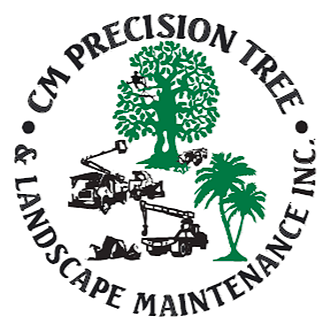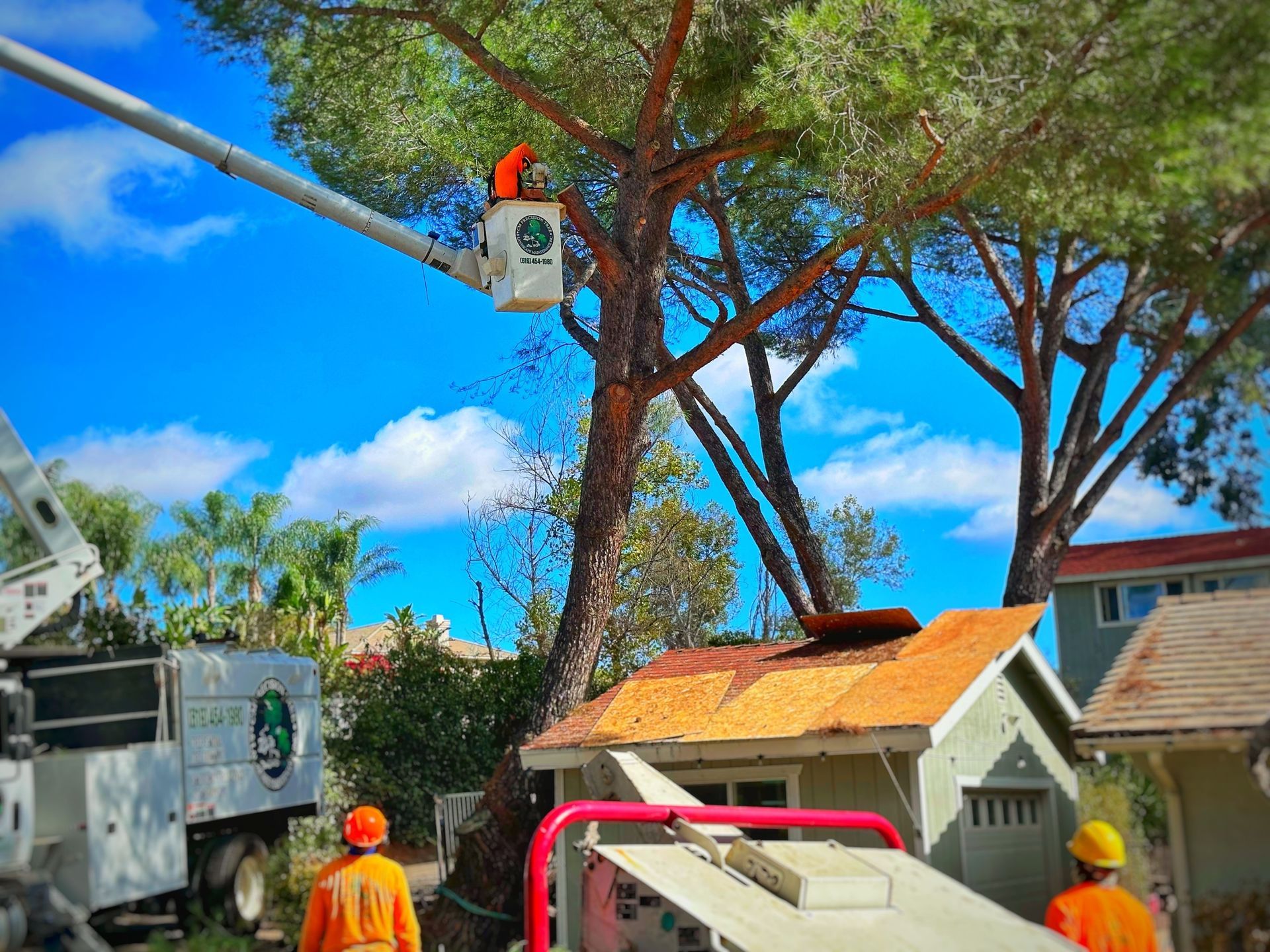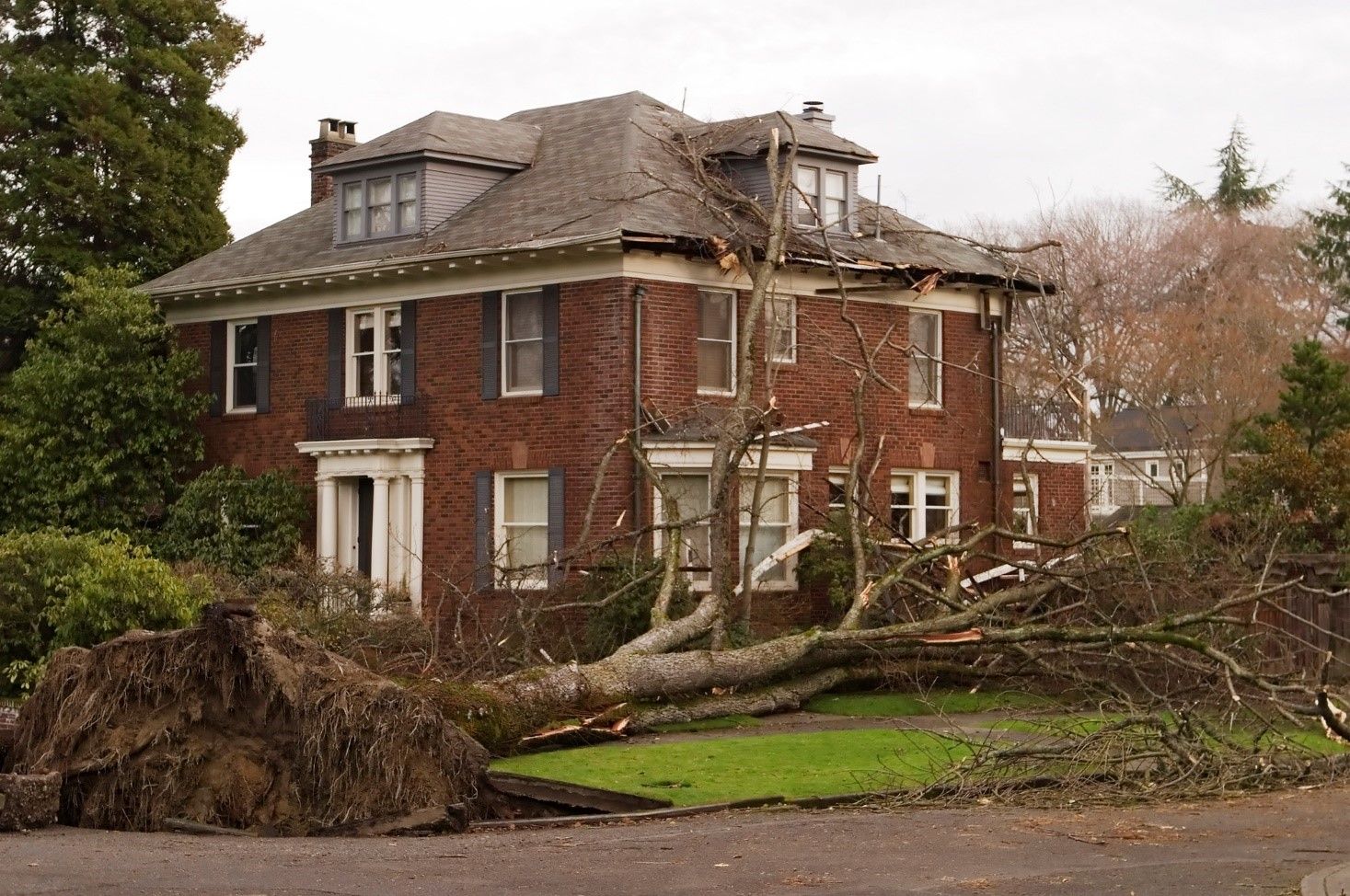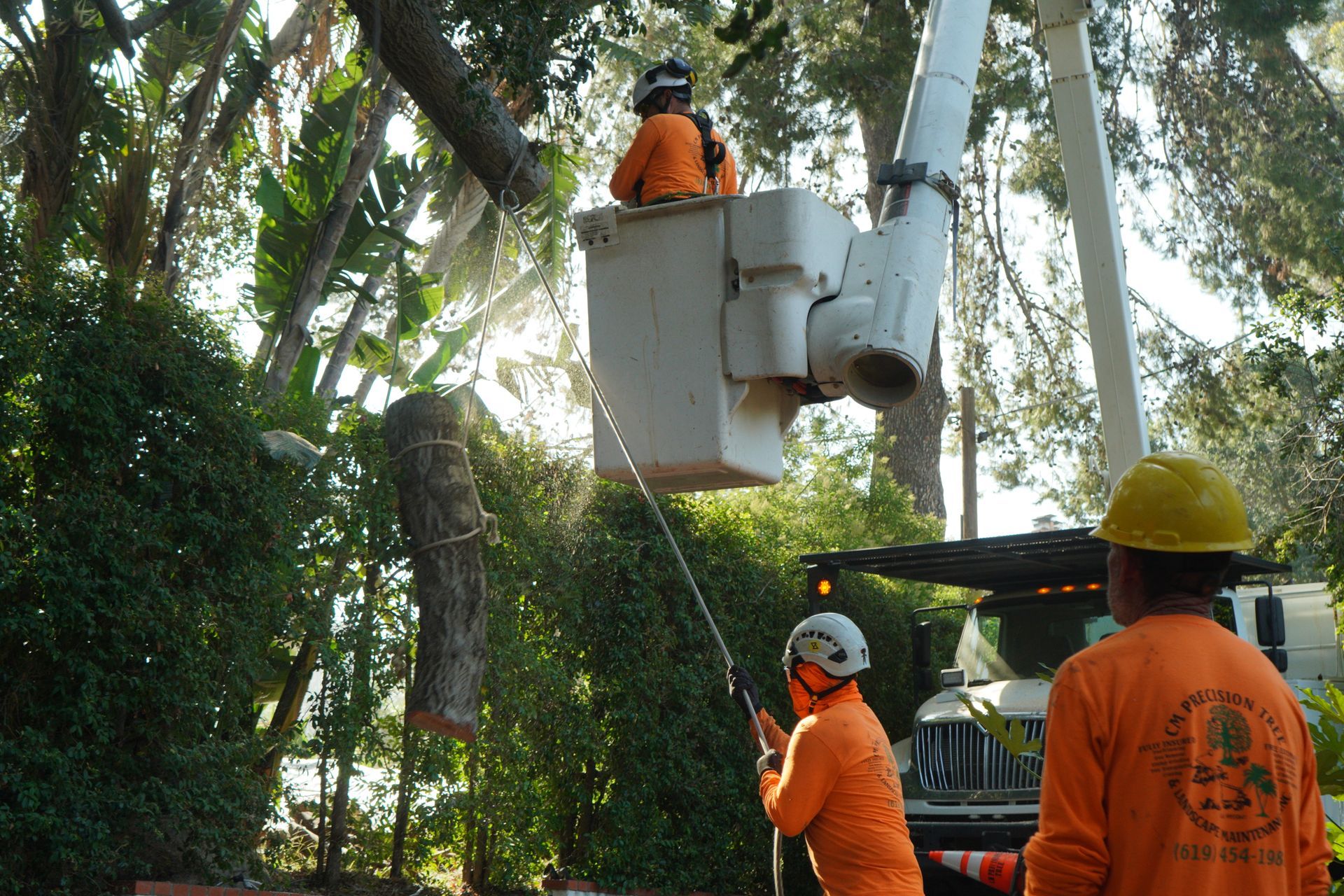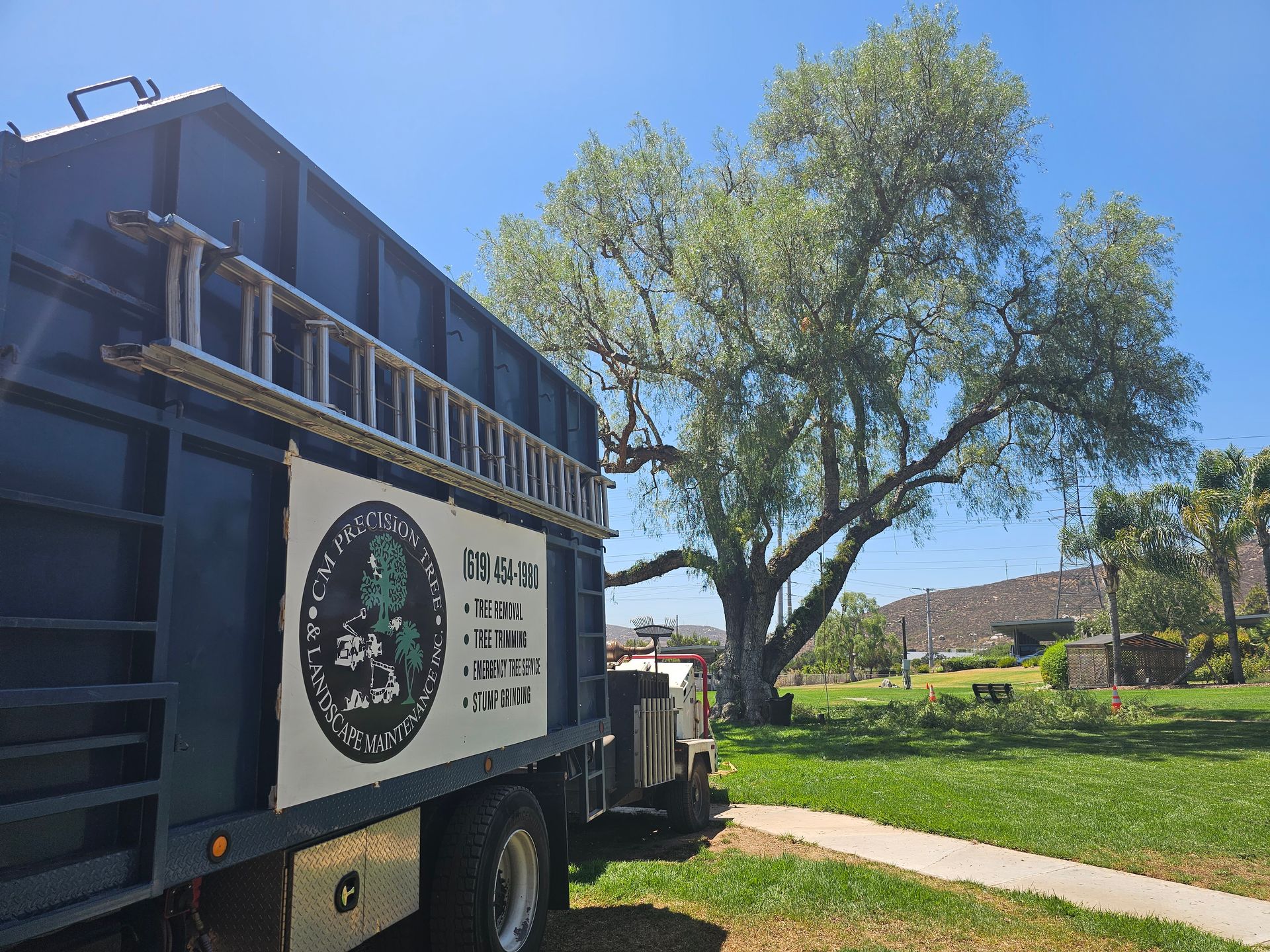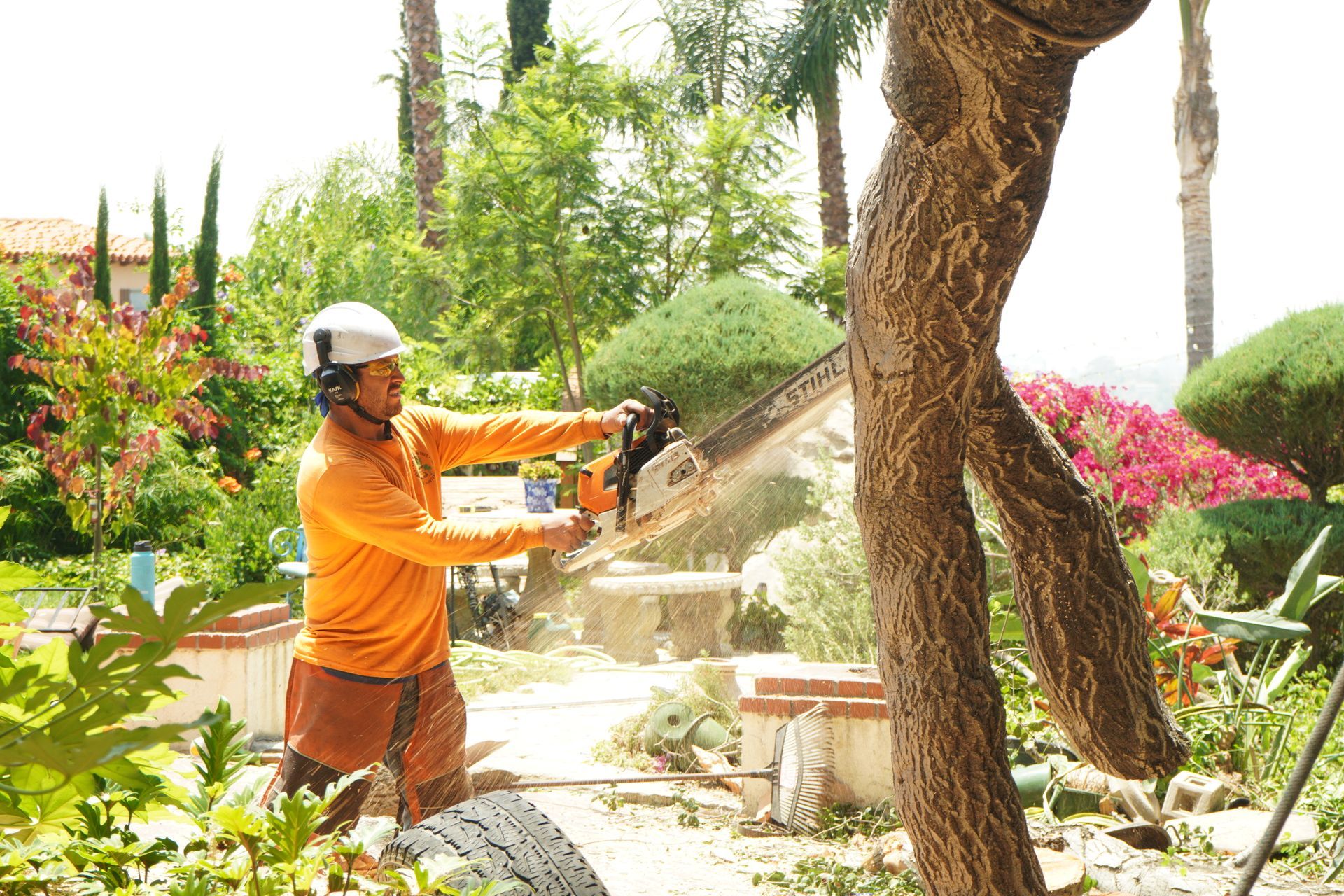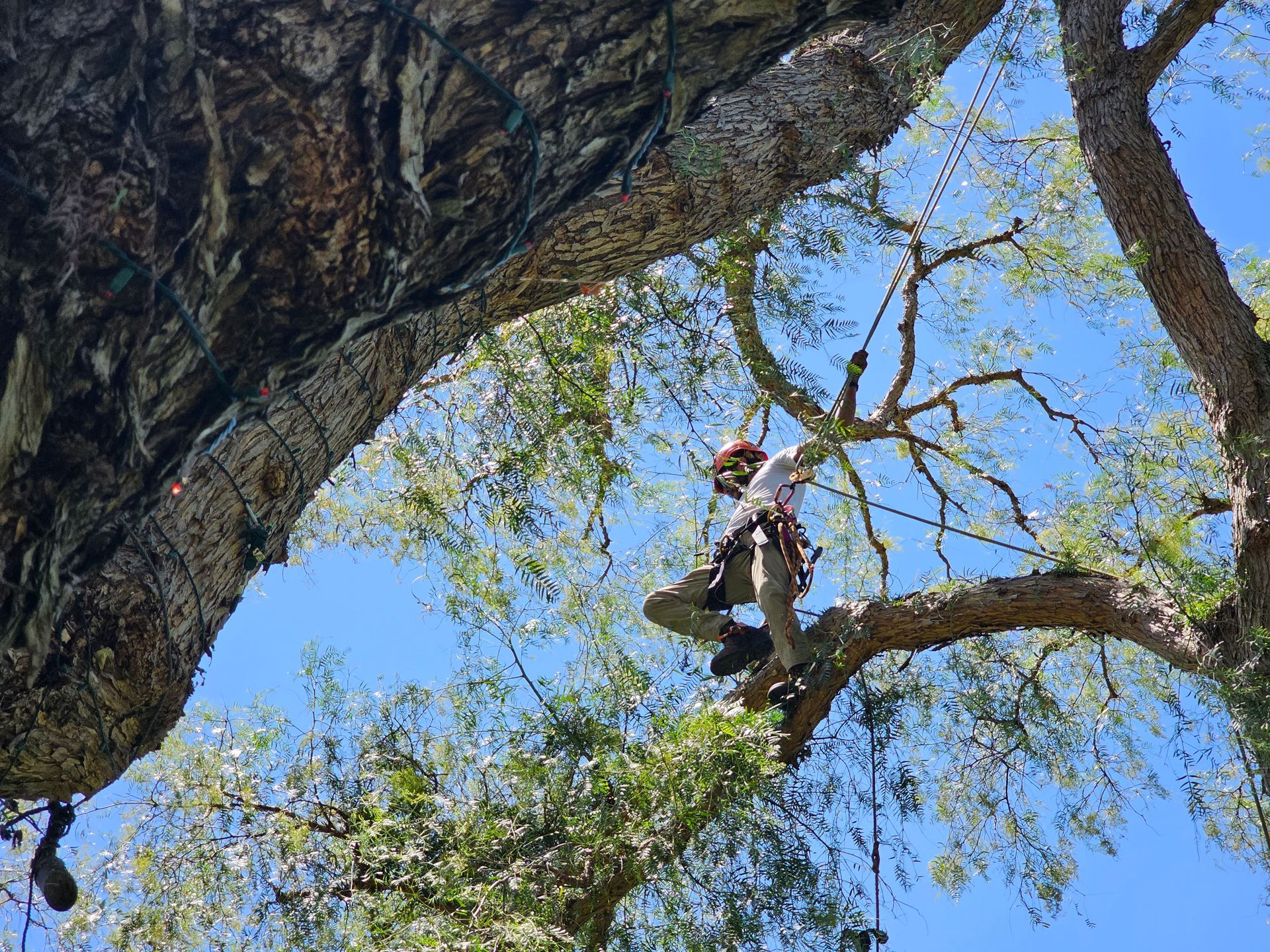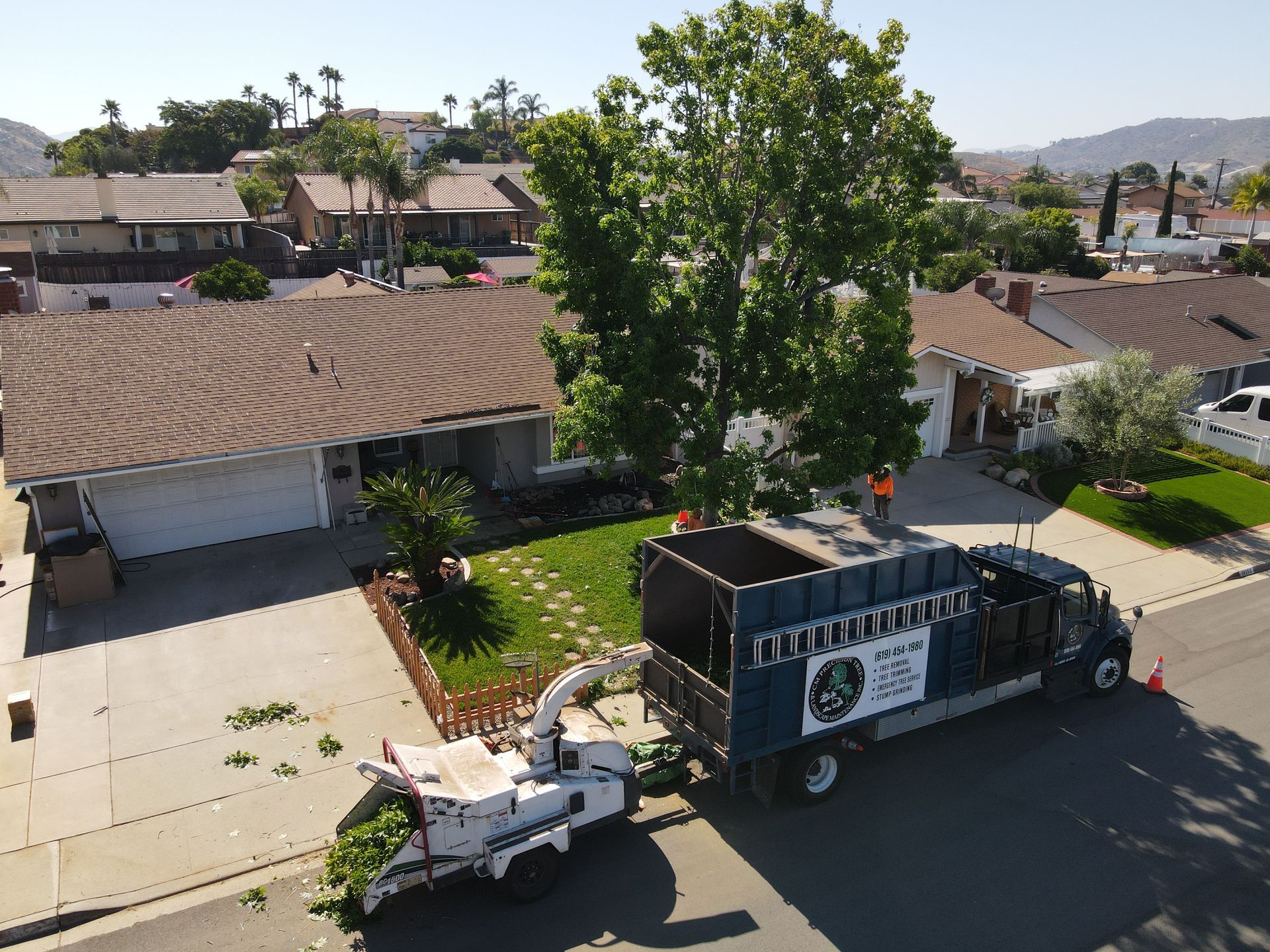Call Us Today! (619) 983-1030
Your Local San Diego Tree Trimming Landscape Maintenance & Stump Grinding Company
Ways To Know Your Tree Needs a Trimming
Properly trimmed and pruned trees enhance aesthetics and preserve tree health. It’s important to inspect your trees regularly to determine if trimming is needed. Before you start trimming, it's crucial to identify and set specific goals for the pruning process. This step helps you avoid unnecessary pruning and ensures that your efforts align with the desired outcomes. Here are some reasons to set specific goals for trimming a tree.
| Aestetics | Safety | Structure | Fruit Trees |
|---|---|---|---|
| Too big | Dead branches | Young tree training | Fruit production |
| Clear a view | Diseased branches | Crossing branches | Rejuvination |
| Need more sunlight | Broken branches | Poor aspect ratio | Disease control |
| Shape | Over extending branches | Co-Dominant stems | Summer pruning |
| Encroachment | Weight management | Included bark | Winter pruning |
Here is what to look for when determining if you tree needs trimming.
Broken Branches
Broken branches on trees serve as a clear indication that pruning is necessary. Pruning becomes imperative when branches are damaged or broken, as they can pose risks to the tree's health and the surrounding environment.
When branches break, it is usually due to various factors such as strong winds, improper pruning, or lack of maintenance. These incidents weaken the tree's structural integrity, making it more susceptible to further damage and disease.
By promptly removing broken branches, the tree can divert its energy towards closing the wound and blocking decay to enter further into the tree. Moreover, it prevents potential hazards like falling branches that could injure people or damage property.
Signs of Disease
When trees show signs of disease, they provide valuable visual cues that necessitate action to maintain their health and prevent further deterioration. Observing these signs, such as wilting leaves, discolored patches, or abnormal growth patterns, presents an opportunity to address potential problems promptly.
Pruning allows for removing affected branches or foliage, preventing the spread of the disease to other parts of the tree or neighboring trees. Pruning also facilitates improved air circulation and sunlight exposure within the tree's canopy. Trimming away diseased or dead branches encourages healthier growth and reduces the likelihood of fungal or bacterial infections taking hold in dense, shaded areas.
Unusual Growth
When trees exhibit abnormal growth, such as excessive branching, misshapen limbs, or dense foliage in specific areas, it can indicate various problems. These issues may include nutrient imbalances, pest infestations, improper pruning or environmental stressors.
By pruning the trees, arborists can rectify these irregularities and promote better tree health and structural integrity.
Excessive Size
When a tree becomes too big for the yard, its expansive branches may encroach on buildings, fences, or other elements. This can lead to damage, causing structural problems or weakening the tree's stability. Furthermore, a large tree might overshadow smaller plants in the garden, preventing them from getting sufficient sunlight, water, and nutrients for their growth. Pruning helps to maintain the tree's shape and size, promoting its health and longevity.
The branches may contact the power lines, leading to power outages, electrical fires, or even fatal accidents due to electrocution. Hence, prune the tree regularly to maintain a safe distance from the power lines and minimize potential dangers.
Trees can undergo crown reduction to decrease their size, yet it's crucial to consider the tree's intrinsic characteristics. Attempting to forcibly reduce a tree's size can result in a detrimental practice known as topping, which is best avoided. Topping can give rise to a host of future issues, including the development of decay within larger branches, the proliferation of excessive shoots along the ends of branches, and an increased risk of branch failure due to the weak attachment of these shoots to the main tree structure. Careful consideration of a tree's natural growth patterns and structural integrity is essential to ensure its long-term health and vitality.
Storm Damage
Strong winds exert considerable force on trees, causing them to bend and sway. Heavy rainfall during storms can also saturate the soil, making it more susceptible to erosion and reducing its ability to anchor tree roots securely. Consequently, this increases the likelihood of uprooting.
Regular and proper pruning of trees can enhance their structural integrity, making them more resistant to wind damage. Furthermore, selective pruning can improve the tree's canopy, allowing wind to pass through more easily, decreasing the branches' strain.
Reduced Fruit and Flower Production
When trees are not pruned, they can become overgrown and inefficient at allocating resources. As a result, they divert energy towards sustaining excessive foliage rather than flowering and fruiting. When done properly, pruning encourages the development of new growth and enhances sunlight penetration into the inner canopy. Increased sunlight exposure stimulates the production of flowers and ultimately leads to a more abundant fruit yield.
Moreover, pruning helps to maintain the tree's structural integrity, reducing the risk of branch breakage under heavy fruit loads. Removing weak or crossing branches ensures a strong and stable framework that can better support the weight of fruits, preventing damage to the tree itself.
The team of arborists at CM Precision Tree and Landscape Maintenance Inc prioritizes safety. We offer a variety of reliable, quality tree services, including stump removal and emergency tree removal, serving San Diego, CA, and the nearby areas. Contact us to speak to a certified arborist.
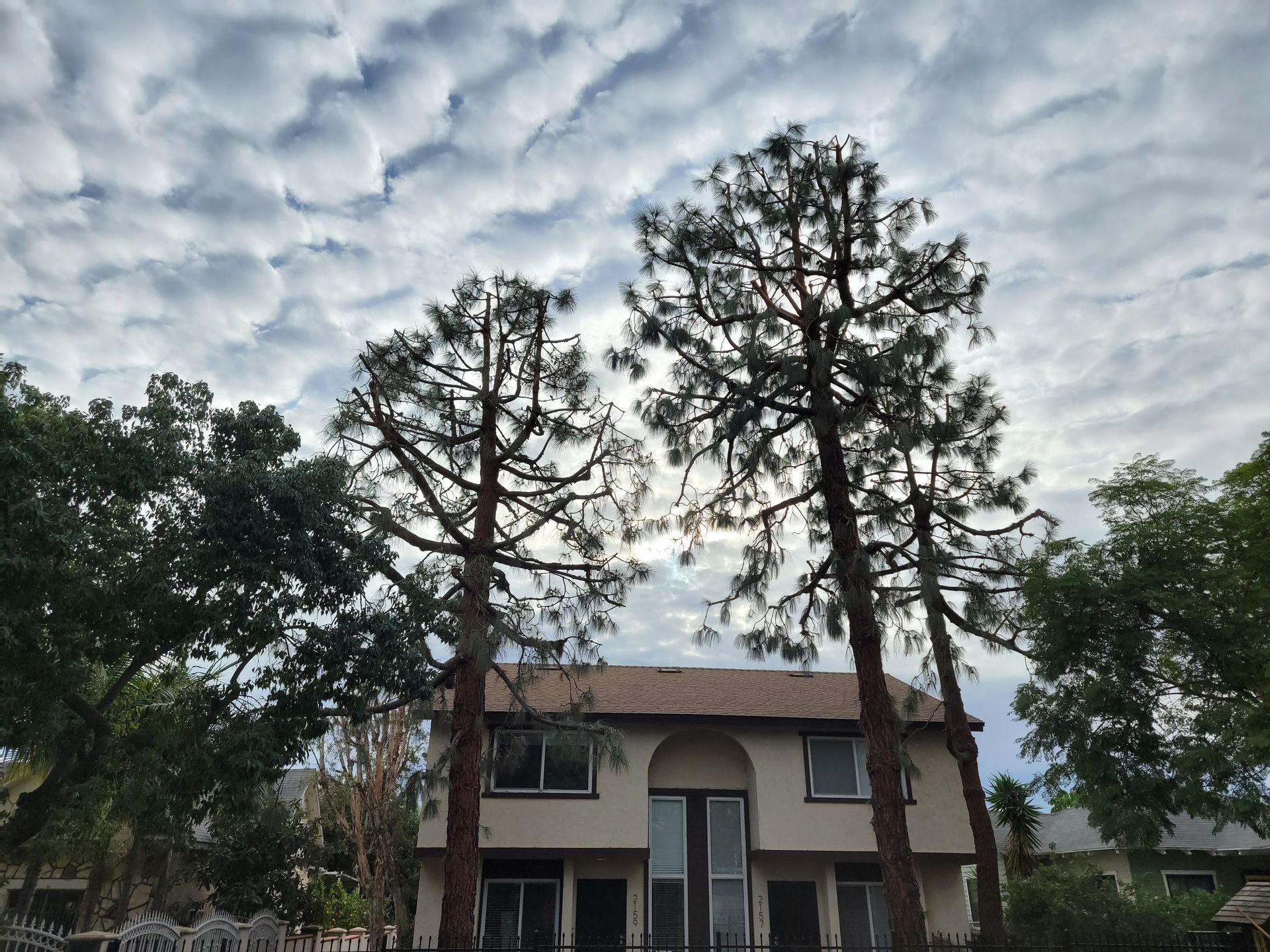
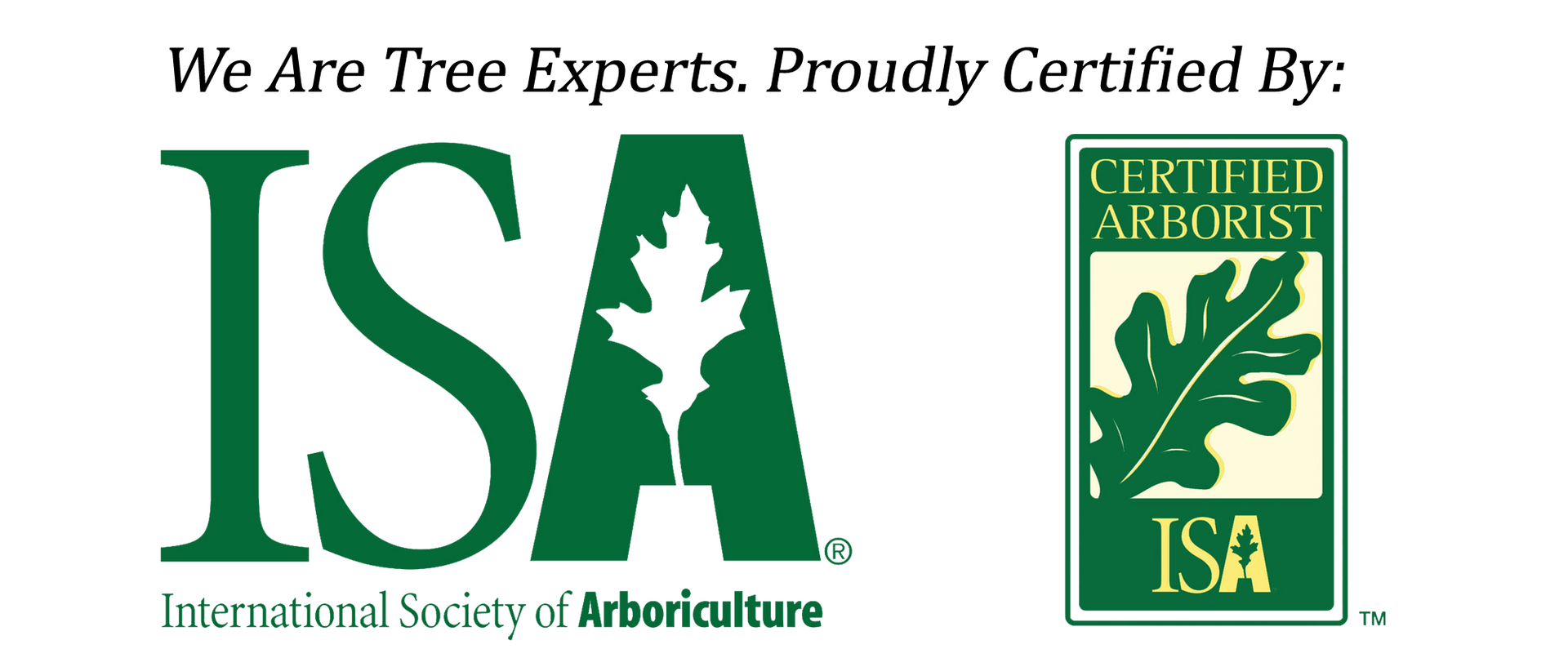

CONTACT INFORMATION
Phone: (619) 983-1030
Email: cmprecisiontree@gmail.com
Address: 4401 Twain Avenue, San Diego, CA 92120
Licensed, Bonded, & Insured
Licence # 955841






BUSINESS HOURS
- Mon - Sun
- Open 24 Hours
